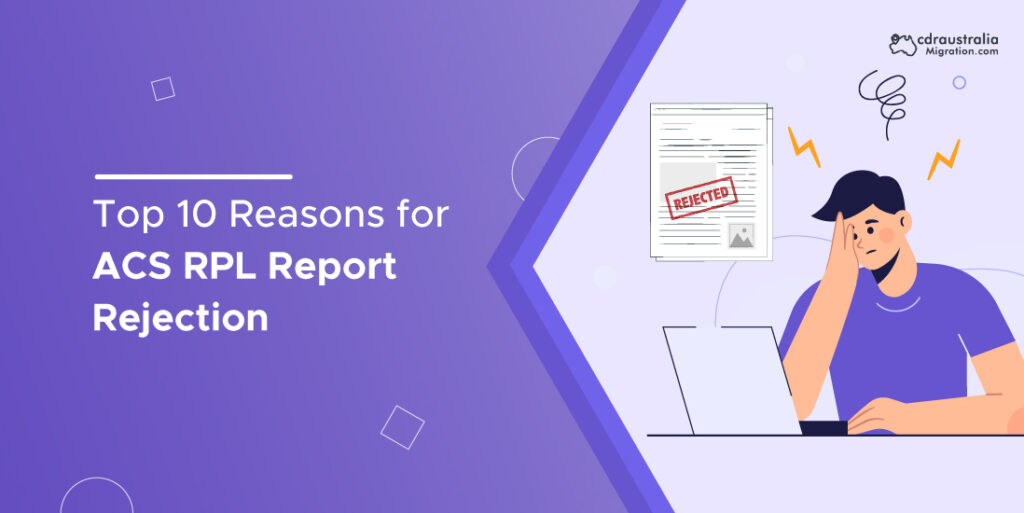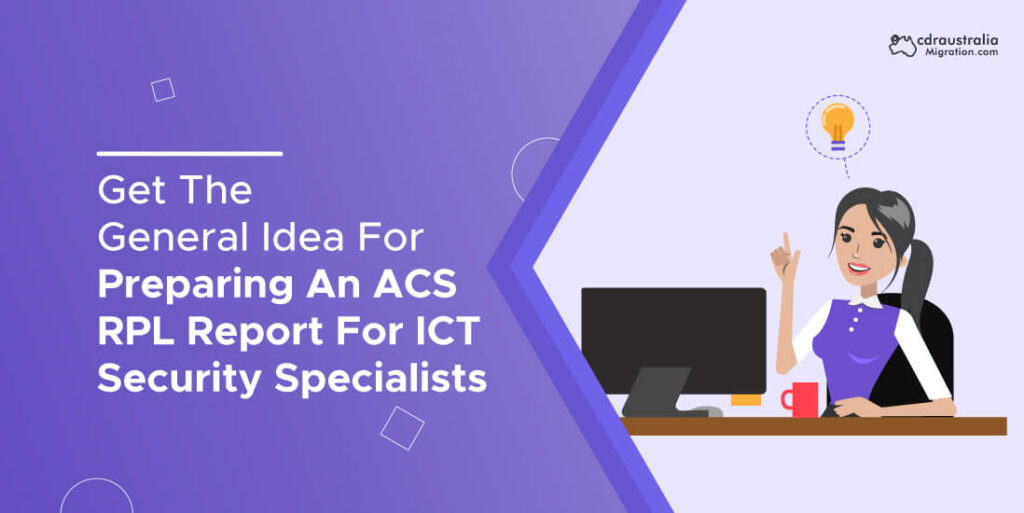How To Write A Perfect Employment Reference Letter For ACS RPL Reports?
All IT professionals who desire Australian migration should fully understand ACS RPL procedures. ACS demands specific employment reference letters to confirm both your workplace experience and IT abilities. A properly written reference letter will boost your chances of achieving success in the ACS skills evaluation, which will lead to the acceptance of your migration applications. This guide provides detailed information about creating the ultimate employment reference letter that will support ACS RPL reports. 🔑 Key Highlights Importance: Your applications for an ACS RPL require an employment reference letter that verifies your ICT work background. The reference document must detail the job title and specific responsibilities while listing utilised technologies and work duration, which serves to authenticate your ability for skilled immigration. What is an ACS RPL Report? The ACS RPL (Recognition of Prior Learning) report addresses IT professionals whose educational qualifications are either nonexistent or unrelated to their professional work experience. The system enables workers to showcase their acquired expertise from professional practice. Who Needs an ACS RPL Report? Individuals without an ICT degree or relevant qualification. Workers in the ICT sector can use the RPL report to showcase their knowledge even though they do not possess official credentials. Skilled migrants who want to live in Australia under ICT professions must submit this application. The RPL report consists of two major sections, which must be completed by the candidate. The sections display the test-taker’s mastery of the ICT subject matter. Three key elements of the RPL report system include key areas of knowledge and two project reports with case study applications. Importance of an Employment Reference Letter in ACS RPL The ACS RPL (Recognition of Prior Learning) application requires employment reference letters to serve as a fundamental part. The Australian Computer Society (ACS) employs this document to validate both your working experience and technical abilities during skill assessments for migration purposes. ACS bases its assessment on real-world Information and Communication Technology (ICT) practice, therefore making the reference letter essential. 1. Proof of Work Experience Professional experience in the ICT sector needs concrete evidence for ACS applications according to their requirement. The employment reference letter serves to demonstrate your professional history of performing tasks that match your selected occupation to immigration assessing bodies. The absence of this document leads to application denial from ACS because of inadequate proof. 2. Verification of Skills and Competencies During the assessment process, ACS examines your skill level through evaluation of your work duties and the technical tools you handled in prior positions. The written reference contains detailed descriptions of your work duties and technology-related skills, which you successfully performed. The reference letter allows ACS to validate that your qualifications match those required by your profession according to established standards. 3. Authenticity of Your Claim ACS operates with great strictness regarding the verification process for authenticating work experience claims. A reference letter signed by a representative such as a manager or human resources personnel gives strength to the statements made in your application. The official validation process protects your application from being marked as suspicious or being questioned by ACS. 4. Demonstrates Practical Application of Knowledge The ACS RPL procedure targets people without a standard ICT educational background. The reference letter is essential for proving that your practical work experience makes up for your unidentified academic background. Your presentation of practical work and problem-solving abilities and detailed projects demonstrates your suitability for the nominated position at ACS. 5. Clarification of Employment Duration Each employment duration must be precisely stated according to the ACS requirements. The reference letter should display the full employment period using a standardised date format (DD/MM/YYYY). The length of time between your start and finish at each job will determine the number of relevant years ACS uses for work experience qualification verification. 6. Highlights Specific Projects and Achievements For your application it helps to include full descriptions about projects both as a manager and as a contributor. The technical competencies you used while working on actual projects must be showcased to ACS through your submission. Your application benefits from highlighting achievements that include heading a team or developing essential systems because it proves your positive organisational influence. 7. Demonstrates Professionalism and Authenticity The reference letter needs professional formatting while containing a structured format according to ACS standards, which should appear on company letterhead, be accompanied by an official stamp and be signed by the writer. The serious nature of your application becomes evident through this document presentation. The letter needs to remain truthful because any untrue statements might result in the denial of your assessment process. 8. Supports the RPL Project Reports The RPL submission includes reference letters together with project reports. Project reports deliver detailed case studies, but the reference letter supplements them by concisely describing your job responsibilities and accomplishments. ACS receives a unified understanding of your professional potential through the combination of your practical work and professional experience. Key Elements of a Perfect Employment Reference Letter 1. Personal and Professional Information This initial part provides fundamental identification information for both workers and employers. You must provide exact, precise information. What to Include: Your Full Name: As per your official records. The organisation’s official title appears as Employer’s Name followed by its complete formal name. The organisation maintains its official postal address, which comprises city state and country. Your Position: Mention your job title (e.g., Software Engineer, IT Analyst). The document requires your phone number and your email while including the employer’s official contact information. 2. Employment Duration and Job Roles The section shows your time at the organisation with details on your work type. What to Include: Enter employment dates in DD/MM/YYYY format since it reduces misunderstandings. State if you worked full-time or part-time employment to clarify your working schedule. The total length of work experience consists of combined years and months. The employment arrangement included describing its nature between full-time, contractual and freelance work. 3. Detailed Job Description The central part of your employment reference letter consists of
How To Write A Perfect Employment Reference Letter For ACS RPL Reports? Read More »




